- Joined
- Dec 2, 2005
- Messages
- 71,110
The BladeForums.com 2024 Traditional Knife is available! Price is $250 ea (shipped within CONUS).
Order here: https://www.bladeforums.com/help/2024-traditional/
Thanks my friend, good to see you hereYes, they are surprisingly different aren't they?
Good on yer for fixing your pics
I really need to spend some time in the B & B thread!
Cool pic
As I may have told you, one of my great grandfathers, a Sheffield cutler, was from Armagh - though I have heard that saying said about a few places!


Looking good

Interesting thread. I've had this (tacklers?) knife for quite a while. At one time I think I had the connection but now I forget. I think it is advertising for a company making a product (buffalo pickers) for use in the weaving industry. The advert for a different company but as close as I found.
View attachment 785732
View attachment 785734 View attachment 785733
Thanks Jack. I remember you mentioning you had some Irish working cutlers in your family background, but not that your great-grandfather may have hailed from County Armagh. I've thought of the place and it's history and people often, since being shown around there earlier this year.
Do you know what firm he worked for?
 He worked at Tommy Ward's, but was killed in WW1. One of my grandfather's brothers moved back to Antrim, and married there. We used to get occasional visits from the cousins when I was a kid
He worked at Tommy Ward's, but was killed in WW1. One of my grandfather's brothers moved back to Antrim, and married there. We used to get occasional visits from the cousins when I was a kid 
Yes, one from County Armagh, and one from County AntrimHe worked at Tommy Ward's, but was killed in WW1. One of my grandfather's brothers moved back to Antrim, and married there. We used to get occasional visits from the cousins when I was a kid
Edit - Just noted a second soldier, with the unusual name of Paramore, (obviously different initials), who also worked at T.W.Ward, and fought in WW1, also with the York and Lancaster Regiment, but who survived. Just wondering if he was a relative, a brother perhaps, of my great grandfather, something of a coincidence?
Thanks for the history lesson! I hadn't heard of these knives before but now I would like to have one!
As of right now my traditional knives are only American, with the exception of two German knives (A.W. Wadsworth ebony equal end jack and a pearl JA Henckels Lobster). I would love to add more European knives to the collection.
Interesting surname, thanks for the further information, Jack. Quite possible that the surviving Paramore was a relation.
I should mention that my initial reason for pairing a Sheffield Tackler's knife with that book, was an assumption that with the prevalence of linen mills in Ulster, the Tackler's knife may have been used in those factories.

A.Wright in rosewood
https://postimg.org/image/6mmb0khk3/

Nice looking example there, bonzodog, with the newer A. Wright tang stamp - and from what I can see, the blade profile looks a little more similar to Jack's Tackler with the fluted bolsters.


I would love to have one of each! That being a lambsfoot and a Tackler. I like the Ettrick pattern too! Though I like all traditional knives really.
Though I'm not really informed on where to buy them. Is there a seller that is okay to post in the forums that imports these knives (Sheffield knives, namely A Wright) for sale in the USA? If there are dealers like these I would be delighted if someone could point me in the right direction of finding them.
Thanks
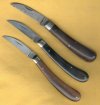
I hope I am not stretching the limits here, but I would like to clarify the term/pattern "Tackler", and its difference from an Ettrick! I'd never heard of a Tackler until the last few months.
A tackler seems to have a more substantial handle, and a somewhat broader blade, than an Ettrick. So all you with critical eye, please tell me which category best defines the J. Rodgers knife at the top of this picture, shown with two Ettricks. Note that the streaks of color make the handle look slimmer than it actually is.
Tackler or Ettrick??
View attachment 787100
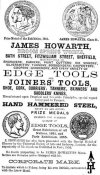
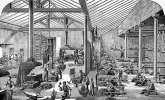
I hope I am not stretching the limits here, but I would like to clarify the term/pattern "Tackler", and its difference from an Ettrick! I'd never heard of a Tackler until the last few months.
A tackler seems to have a more substantial handle, and a somewhat broader blade, than an Ettrick. So all you with critical eye, please tell me which category best defines the J. Rodgers knife at the top of this picture, shown with two Ettricks. Note that the streaks of color make the handle look slimmer than it actually is.
Tackler or Ettrick??
View attachment 787100
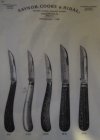
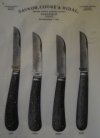
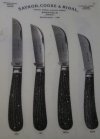
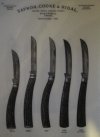
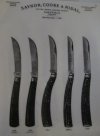
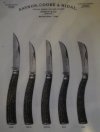

In it's purest sense, I suppose a Tackler's knife is any knife used by a Tackler in an industrial mill. I know what I expect to see if someone says they have a 'Tackler's knife' but this is only based on what I have seen before in this forum. I've certainly never seen a strict definition of one.


